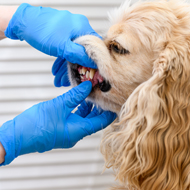Dogs Trust warns of rise in stray dog numbers
Only 39 per cent of dogs are reunited with their owners.
A report from Dogs Trust has highlighted a ‘worrying’ increase in stray dogs, with the numbers increasing year by year.
For the first time ever, the charity says that more dogs are taken into welfare organisations than are being reunited with their owners.
The recorded number of stray dogs has seen an overall decline since 1997. However, in the last three years, the Dogs Trust has been concerned as numbers rise again.
The Dogs Trust Stray Dog Survey revealed that over 36,000 dogs had been handled by local authorities between April 2023 and March 2024. However, only 39 per cent of dogs taken in by dog wardens were later reunited with their owners.
These are the lowest reunion numbers in recent years, with 43 per cent of dogs reunited with owners in 2022/2023 and 54 per cent in 2021/2022.
The data also shows a recent increase in the number of dogs being euthanised, despite euthanasia numbers steadily reducing in previous years. In 2023/2024, there was a six per cent increase in the estimated proportion of dogs euthanised by local councils.
Dogs Trust suggests this could translate to an increase of over 1800 dogs across the UK. Among the reasons were ill health (25 per cent) and behavioural issues (42 per cent).
Some dogs were also euthanised due to the requirements the Dangerous Dogs Act – 24 per cent compared to seven per cent the previous year.
Staffordshire bull terriers were most likely to be found as stray dogs, with 45 per cent of authorities reporting them as one of the top three breeds found straying. Lurchers, crossbreeds and Jack Russells also topped the list.
Maria Murray, director of behaviour and community services at Dogs Trust, says: “While the exact causes are unclear, financial pressures on local authorities may be limiting their ability to trace and return dogs, pushing more into the care of charities.
“At the same time, rising numbers of stray and unwanted dogs appear to reflect the ongoing cost of living crisis, which we know is hitting dog owners particularly hard. Our own research shows dog-related costs have soared, putting many owners in the heartbreaking position of no longer being able to care for their pets.”
Image © Dogs Trust



 The WSAVA has invited veterinary professionals to a webinar on responsible antibiotic usage in dentistry.
The WSAVA has invited veterinary professionals to a webinar on responsible antibiotic usage in dentistry.